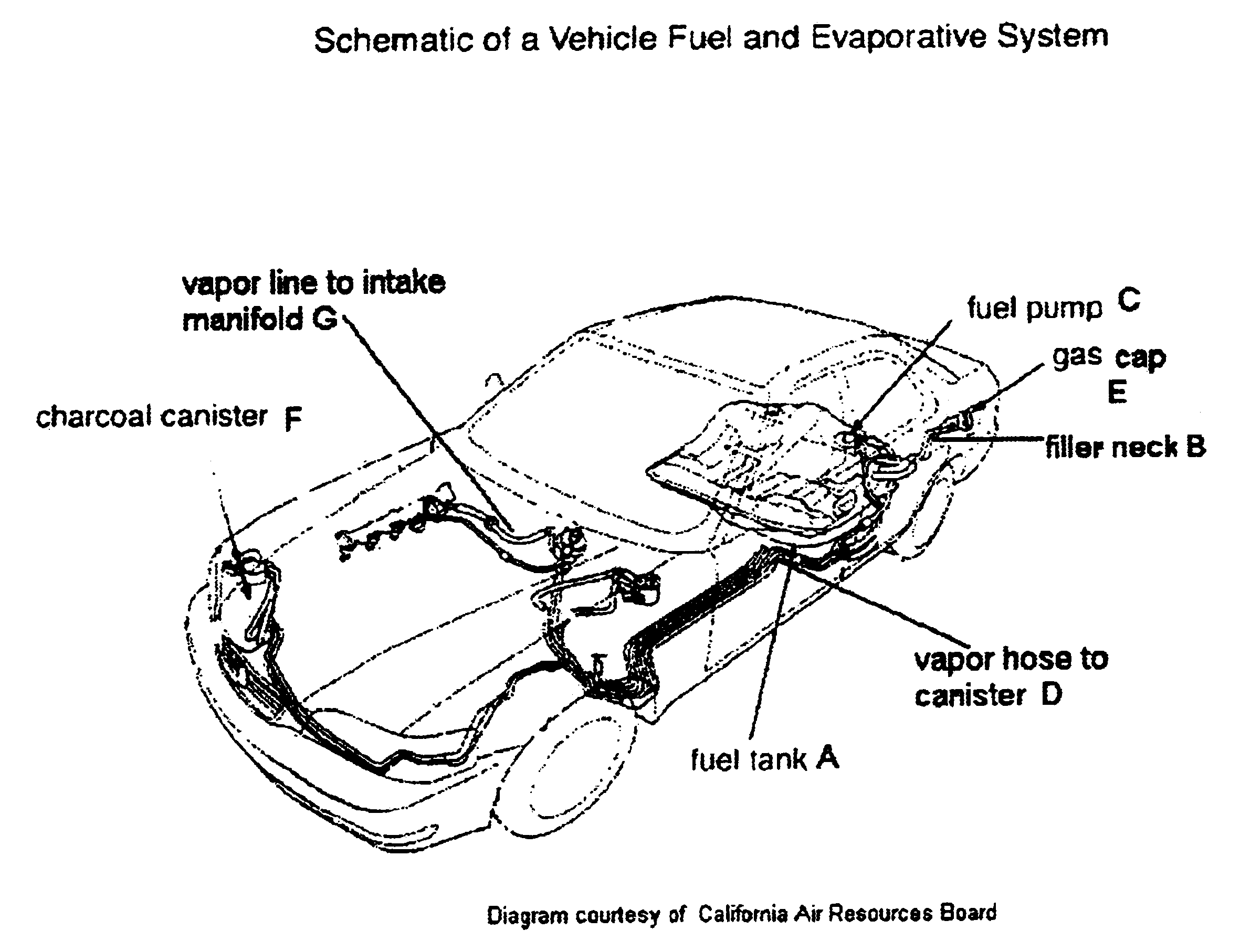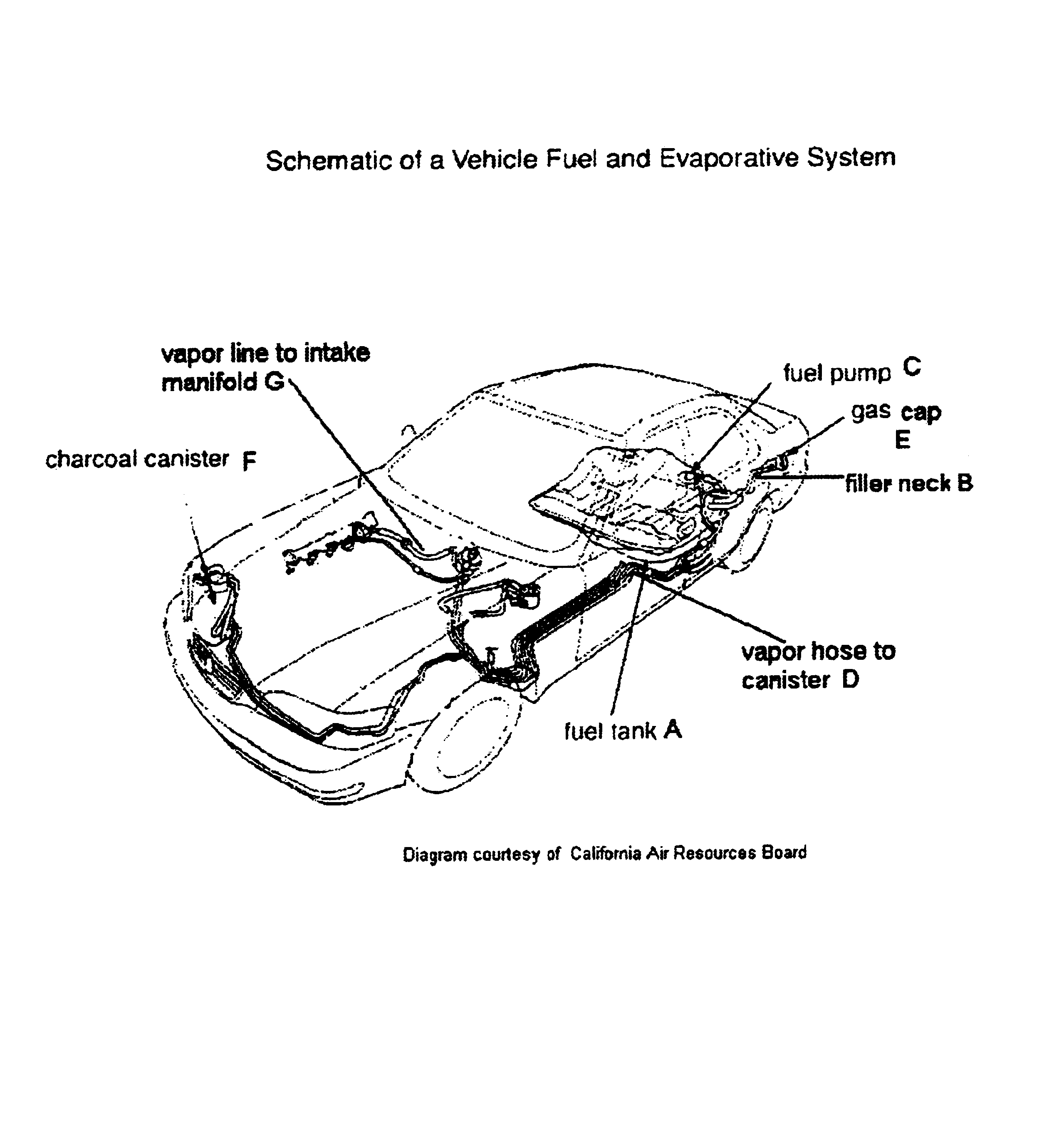Temperature, vapor space and fuel volatility-compensated evaporative emissions system leak test method
a technology of evaporative emissions system and temperature, which is applied in the direction of fluid tightness measurement, instruments, machines/engines, etc., can solve the problems of affecting the test, affecting the normal release of pressure, and prone to sudden changes in fuel vapor pressure of high-temperature or high-volatile fuel
- Summary
- Abstract
- Description
- Claims
- Application Information
AI Technical Summary
Problems solved by technology
Method used
Image
Examples
Embodiment Construction
Attached in FIG. 1 is a schematic diagram of a vehicle fuel tank and associated evaporative emissions control system. The fuel tank (marked A) contains several openings, all ordinarily sealed: one at the fuel tank filler neck (B), one at the mounting housing for the fuel pump (C), one at the inlet to the vapor hose to the canister (D), and a rollover valve (not shown). Some vehicles may contain openings additional to these. The evaporative emissions control system is comprised of these seals, as well as several other components: the fuel cap (E), an elastomeric rubber connector from the filler neck (B) to the fuel tank (A), a charcoal canister (F), and a vapor hose (G) connecting the canister to the engine intake manifold. In general, the operation of the system is as follows: During vehicle operation, the fuel in fuel tank A is heated by the return of hot fuel from the engine and from ambient sources, such as hot pavement. This heating causes vapor generation in fuel tank A; this v...
PUM
 Login to View More
Login to View More Abstract
Description
Claims
Application Information
 Login to View More
Login to View More - R&D
- Intellectual Property
- Life Sciences
- Materials
- Tech Scout
- Unparalleled Data Quality
- Higher Quality Content
- 60% Fewer Hallucinations
Browse by: Latest US Patents, China's latest patents, Technical Efficacy Thesaurus, Application Domain, Technology Topic, Popular Technical Reports.
© 2025 PatSnap. All rights reserved.Legal|Privacy policy|Modern Slavery Act Transparency Statement|Sitemap|About US| Contact US: help@patsnap.com


